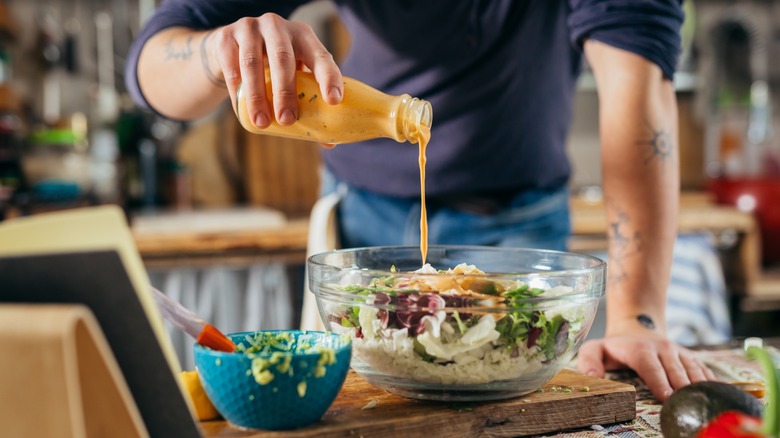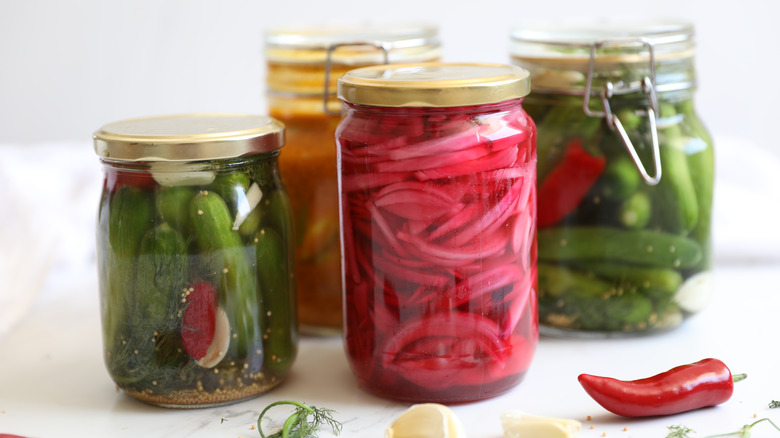For Punchy Salad Dressing, Try Adding A Pickled Ingredient
We know you're tired of your go-to bottled Caesar salad dressing or that likely past-best-by-date vinaigrette loyally sitting in your fridge's door-side shelf. However, it may seem too daunting to whip up your own homemade dressing each time you're craving a salad. But, we promise it's definitely worth it to mix up your own concoction, and it is much easier than it seems.
There are essentially two components you need to balance to achieve a great dressing: fat and acid, according to The Washington Post. These two elements make up the base of most dressings on the market today. Dressings made today are likely either vinaigrettes or creamy dressings. Vinaigrettes are higher on the acid side, usually following a ratio of 1 part acid to 3 or 4 parts oil (oil is usually the fat of choice in vinaigrettes), while creamy dressings are 1 part acid to 8 to 16 parts fat. Salt is another essential component that should always be added to taste.
Now that you know the basics, it's easy to get creative at home. Starting with the age-old classic of oil and vinegar may be a great place to begin. But, when you're ready to start leveling up your salad dressing game, we have a recommendation for you: adding pickle brine.
Pickle brine adds a kick
Adding pickle brine to your dressing as the acidic component can elevate any homemade recipe, as it has a bit more of a flavor kick than classic vinegar. The tangy, pickled taste pairs great with both creamy fats, like sour cream or buttermilk, or with oils, like olive oil.
Our pickle juice vinaigrette recipe calls for ¼ cup pickle juice, 2 tablespoons olive oil, and 2 tablespoons vegetable oil. While you can keep it simpler, we also added in a few of the pickling spices, a touch of distilled white vinegar, and a few red pepper flakes for spice, along with shallot, garlic, and salt. This simple vinaigrette dressing pairs well with leafy salads and seafood.
Another bonus to adding brine to the ingredient list, as Bon Appétit points out, is it's a great way to make use of the leftover liquid inside your used jar of pepperoncinis, olives, or pickles to avoid any food waste.
If you do make our pickle juice vinaigrette at home, make sure to either use it immediately or pour it into an airtight container for fridge storage. It should last up to two weeks when stored properly. Now, you no longer have to succumb to the overly-processed, unsatisfying, store-bought dressings, and you can feel confident creating your own combinations at home.

